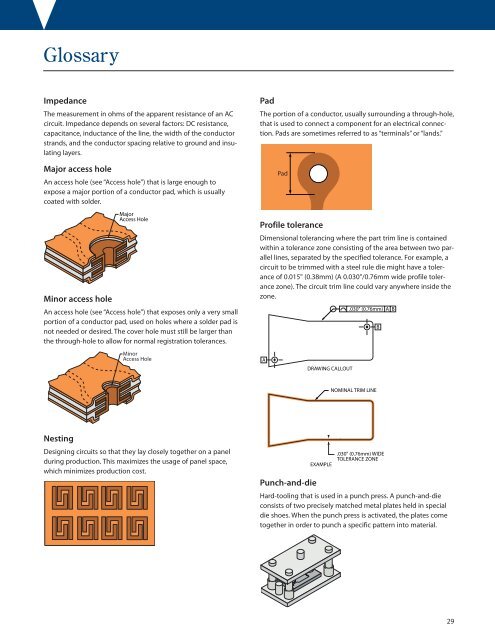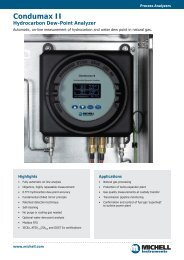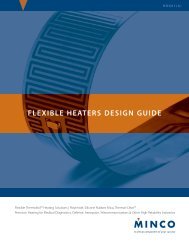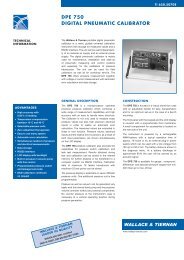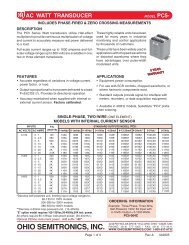FLEX CIRCUITS DESIGN GUIDE
Minco Flex Circuits Design Guide - BiS Sistem
Minco Flex Circuits Design Guide - BiS Sistem
- No tags were found...
You also want an ePaper? Increase the reach of your titles
YUMPU automatically turns print PDFs into web optimized ePapers that Google loves.
Glossary<br />
Impedance<br />
The measurement in ohms of the apparent resistance of an AC<br />
circuit. Impedance depends on several factors: DC resistance,<br />
capacitance, inductance of the line, the width of the conductor<br />
strands, and the conductor spacing relative to ground and insulating<br />
layers.<br />
Major access hole<br />
An access hole (see “Access hole”) that is large enough to<br />
expose a major portion of a conductor pad, which is usually<br />
coated with solder.<br />
Major<br />
Access Hole<br />
Minor access hole<br />
An access hole (see “Access hole”) that exposes only a very small<br />
portion of a conductor pad, used on holes where a solder pad is<br />
not needed or desired. The cover hole must still be larger than<br />
the through-hole to allow for normal registration tolerances.<br />
Minor<br />
Access Hole<br />
Pad<br />
The portion of a conductor, usually surrounding a through-hole,<br />
that is used to connect a component for an electrical connection.<br />
Pads are sometimes referred to as “terminals” or “lands.”<br />
Profile tolerance<br />
Dimensional tolerancing where the part trim line is contained<br />
within a tolerance zone consisting of the area between two parallel<br />
lines, separated by the specified tolerance. For example, a<br />
circuit to be trimmed with a steel rule die might have a tolerance<br />
of 0.015" (0.38mm) (A 0.030"/0.76mm wide profile tolerance<br />
zone). The circuit trim line could vary anywhere inside the<br />
zone.<br />
A<br />
Pad<br />
DRAWING CALLOUT<br />
.030" (0.76mm) A B<br />
B<br />
NOMINAL TRIM LINE<br />
Nesting<br />
Designing circuits so that they lay closely together on a panel<br />
during production. This maximizes the usage of panel space,<br />
which minimizes production cost.<br />
EXAMPLE<br />
.030" (0.76mm) WIDE<br />
TOLERANCE ZONE<br />
Punch-and-die<br />
Hard-tooling that is used in a punch press. A punch-and-die<br />
consists of two precisely matched metal plates held in special<br />
die shoes. When the punch press is activated, the plates come<br />
together in order to punch a specific pattern into material.<br />
29


